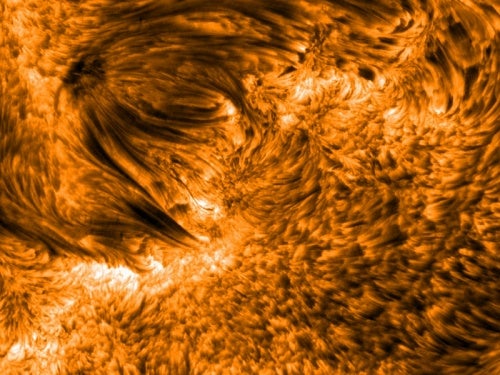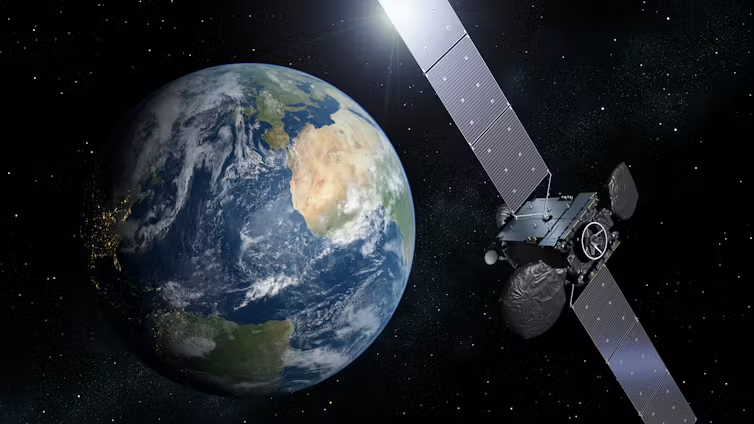Every 5 minutes, plasma bursts from the Sun’s surface at speeds up to 50,000 miles per hour (81,000 kilometers per hour), reaching heights of 3,000 miles (5,000 km). Known as spicules, these supersonic jets rush forth with great consistency, but with relatively small diameters of just 300 miles (500 km), these periodic surges have proved to be difficult test subjects for solar researchers. Using high-resolution imagery, satellite data, and computer modeling, however, a team recently identified how spicules form.
“We used a computer model to provide the missing link between observations of the surface of the Sun, taken with the MDI instrument onboard ESA/NASA’s Solar and Heliospheric Observatory (SOHO) satellite, and observations of the jets in the low solar atmosphere taken with the [Swedish 1-meter Solar Telescope] SST and NASA’s Transition Region and Coronal Explorer (TRACE) satellite,” explains team member Robertus Erdelyi von Fay-Siebenbuergen of the Solar Physics and upper-Atmosphere Research Group of the University of Sheffield, England. Together, the observations enabled the team to pinpoint how often and where spicules appeared.
The results, which will be published in the July 29 issue of the journal Nature, showed that spicules are formed by sound waves, which have the same 5-minute period. Plasma, bubbling upward from the Sun’s interior to the surface, creates the drum-like cadence. Although the sound waves usually are damped, under certain conditions, they leak into the low atmosphere, or chromosphere, spawning shock waves. These waves propel the plasma, producing more than 100,000 spicules at any given time on our star’s surface.
Understanding this process will help scientists better understand how matter is ejected into the Sun’s high atmosphere, or corona, the source of solar wind. Disturbances in the solar wind, a continuous stream of charged particles that envelops Earth, can wreak havoc on satellites.
“Spicules carry more than 100 times the mass into the Sun’s atmosphere required to feed the solar wind,” says team member Bart De Pontieu of the Lockheed Martin Solar and Astrophysics Lab at the company’s Advanced Technology Center, “which means that
they are of huge importance for the balance of how much mass goes into and out of the corona.” Future studies will focus on whether this mass contributes to the solar wind as well as on the possible role shock waves play in the Sun’s corona.










